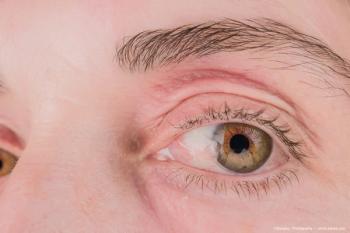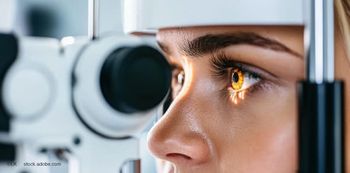
AAO 2025 Takeaways: The new era of glaucoma treatment and surgical precision
Key Takeaways
- Combining cataract surgery with the travoprost intracameral iDose implant offers predictable IOP reduction and impressive safety, reducing reliance on topical medications.
- The Leos endoscopic laser system enhances visualization for endoscopic cyclophotocoagulation, allowing safer, more precise energy application and improved clinical outcomes.
Editor's Note: This content was generated with the assistance of AI.
AAO 2025 showcased a powerful convergence of innovation in glaucoma care, emphasizing safer long-term pressure control, improved visualization technologies, and more individualized lens decision-making for complex patients. Presentations by Inder Paul Singh, MD; Sahar Bedrood, MD, PhD; and John Berdahl, MD, offered a unified picture of where glaucoma is headed: toward safer procedures, smarter device integration, and more tailored surgical strategies.
Singh: iDose With Cataract Surgery Delivers Consistent, Medication-Free Control
Singh’s presentation stood out for its real-world clarity: combining cataract surgery with the travoprost intracameral iDose implant provides predictable intraocular pressure (IOP) reduction with impressive safety.
His cohort of patients—whose baseline IOP averaged 25 mm Hg off drops—experienced an 11 mm Hg reduction at 12 months, with 98% achieving ≥20% pressure reduction and over 96% maintaining pressures below the crucial 18 mm Hg mark. Almost all remained drop-free, relieving a long-standing burden of adherence, cost, and ocular surface disease.
Equally important was the safety profile. Singh reported no significant cystoid macular edema, no chronic inflammation, and no prostaglandin-associated surgical complications. A standard cataract steroid taper was sufficient—a major advantage over treatments needing intensified postoperative care.
A key message was accessibility. The iDose procedure integrates seamlessly into cataract workflows, requiring none of the advanced angle navigation needed for certain MIGS. This allows a larger group of surgeons to adopt sustained-release prostaglandin therapy, lowering IOP from inside the eye rather than relying on variable topical adherence.
Bedrood: The Leos Endoscopic Laser System Brings New Precision to ECP
Where Singh emphasized drug-device synergy, Sahar Bedrood, MD, highlighted a different frontier: enhanced visualization for endoscopic cyclophotocoagulation (ECP) using the new Leos endoscopic laser system.
Her message was straightforward and compelling: she had never seen the ciliary body with such clarity.
Unlike older scopes, the Leos system provides:
- razor-sharp visualization of ciliary processes
- improved depth perception
- high-resolution imaging of fine anatomic details
- single-use handpieces that eliminate optical degradation
This clarity translates directly to safer, more precise energy application. Bedrood noted that the improved view allows her to use lower energy while achieving more effective tissue treatment—potentially a game-changing shift in both clinical outcome and patient comfort.
In early cases, she saw reduced inflammation and strong pressure-lowering results. The device’s ease of use—“one button, one click”—earned praise from OR staff, removing a long-standing workflow barrier associated with older, more finicky endoscopes.
Berdahl: Advanced IOL Selection for Pseudoexfoliation Patients Requires Precision Medicine
John Berdahl, MD, connected glaucoma care with a critical cataract consideration: implanting premium IOLs in pseudoexfoliation patients. These individuals present unique risks due to zonular weakness, variable pupil behavior, and the frequent co-existence of glaucoma.
Berdahl emphasized several surgical imperatives:
- Ensure a stable capsular bag (often reinforced with capsular tension rings).
- Evaluate pupil size to confirm adequate light delivery for diffractive or EDOF IOLs.
- Plan for future adjustments, such as potential repositioning or exchange.
- Align lens choice with glaucoma severity, especially regarding contrast sensitivity.
While toric lenses remain safe and beneficial, multifocal and EDOF IOLs demand careful consideration. Mild glaucoma typically poses minimal visual compromise, but moderate glaucoma changes the equation, as contrast loss from the disease can stack unfavorably with IOL optics.
His overarching point: pseudoexfoliation patients can benefit from advanced lenses, but only through a highly individualized, risk-adjusted approach that accounts for long-term visual function—not just short-term acuity.
The AAO 2025 Glaucoma Innovation Takeaway
Taken together, these three presentations paint a clear picture of the future of glaucoma care:
- Sustained-release therapy will play a central role in long-term IOP control.
- Better visualization creates safer, more effective surgery, particularly in angle-based procedures.
- Lens selection for glaucoma-adjacent conditions must be individualized, not generalized.
From medication-independent pressure control to enhanced surgical precision and tailored IOL planning, AAO 2025 signaled a maturing field moving toward durability, predictability, and personalization.
Newsletter
Don’t miss out—get Ophthalmology Times updates on the latest clinical advancements and expert interviews, straight to your inbox.













































.png)


